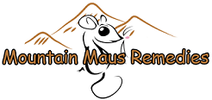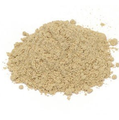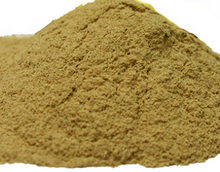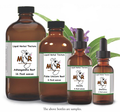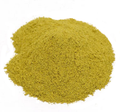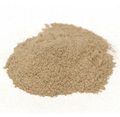 Loading... Please wait...
Loading... Please wait...- Home
- Bulk Herbs
- Herbs (J-L)
- Licorice Root Powder
- Home
- Herbs - Organically Grown & Wild Crafted USA
- J K L
- Licorice Root Powder
Licorice Root Powder
Product Description
Licorice Root, Powder
Also Known As – Glycyrrhiza glabra, Gan cao, sweet root, glycyrrhiza, Radix liquiritiae
Organically Grown USA
Overview – The licorice plant is a legume like beans and peas. It is a beautiful plant with lots of pinnate leaves and purple or blue flowers. Seeds form in a pod similar to beans or peas. What gives the very distinctive flavor is anise, and in candy the root of the herb is added as a sweetener, while anise is the star of the show. It is a very common herb used in Chinese medicine.
Medicinal Uses – Internally, Licorice can be made into syrups or lozenges for sore throats and coughs. It is also helpful for mouth and peptic ulcers. It is a mild laxative and is antiviral. It affects the endocrine system. In the digestive system, the herb is useful for ileitis, irritable bowel syndrome, leaky gut syndrome, Crohn's disease and ulcers. In Chinese medicine, it is used to harmonize other ingredients in a formula. Sometimes it is used to treat epilepsy and hepatitis. It can also be useful as HIV support and for eczema treatment. Other uses include hay fever, menopause symptoms and singles. Externally, Licorice is sometimes used in tooth powders. It can also be applied topically to genital herpes lesions.
Other Uses – It is used to sweeten candy and as a culinary spice. It can be found in root beer and in some herbal teas.
Herbs to Combine/Supplement – Licorice can be combined with many other herbs.
Parts Used – The root is the part of the plant that is used medicinally.
Suggestions – Used in Teas, tinctures, and in encapsulations. The whole sticks and slices may be chewed straight and are pleasant tasting. Taking doses of 50g on a daily basis for two weeks can cause a noticeable rise in blood pressure and water retention. Licorice Tincture dosage is usually 2 to 4ml three times per day and dried root of licorice is measured out at 1 to 5g three times per day made into a decoction.
Precautions - Some medications may interact with this herb. Excessive use of licorice, even in candy can be toxic to the liver and cardiovascular system. Watch for signs of hypertension and edema.
Disclaimer – These products are not intended to diagnose, treat cure or prevent any disease. Reviews are not intended as a substitute for appropriate medical care or the advice of a physician or another medical professional. Actual results may vary among users. Mountain Maus Remedies LLC makes no warranty or representation, expressed or implied, as to the accuracy or validity of the information contributed by outside product review submissions, and assumes no responsibility or liability regarding the use of such information. The information and statements regarding the dietary supplements have not been evaluated by the Food and Drug Administration. If you have a medical condition or disease, please talk to your health care provider. If you are currently taking a prescription medication, you should work with your health care provider before discontinuing any drug or altering any drug regimen, including augmenting your regimen with any herb or dietary supplements. Do not attempt to self-diagnose any disease or ailment based on the reviews and do not use the information contained herein for diagnosing or treating a health problem or disease. Proper medical care is critical to good health. If you have a health concern or suspect you have an undiagnosed sign or symptom, please consult a physician or health care practitioner.
